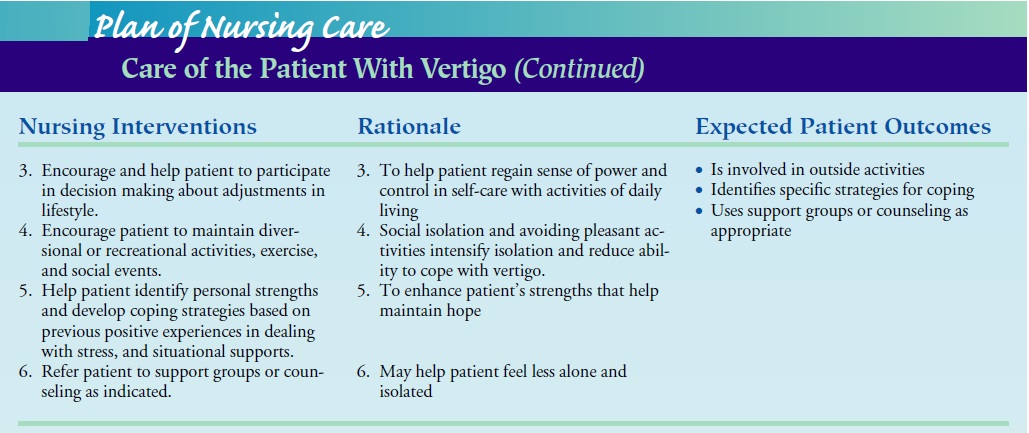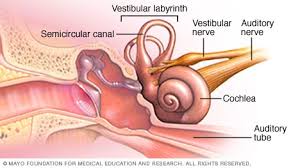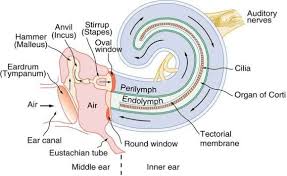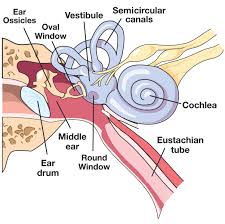Meniere's Disease
Definition
A disease caused by an abnormal inner ear fluid balance
Causes
Blockage in endolymphatic duct
Pathophysiology
Blockage in th endolymphatic duct → endolymphatic hydrops = dilation in the endolymphatic space → either the pressure inside increases or the inner ear membrane ruptures
Incidence
more common in adults of 20 - 60 yrs
equally common in both genders
One ear or both ears may be affected
in 20% of patients family history +
Clinical Features
Fluctuating sensorineural hearing loss
Tinnitus
A feeling of pressure or fullness in the ear
Episodic, incapacitating vertigo
Nausea and vomiting
Mild to extreme diasability
Diaphoresis (sweating) and a persistent feeling of imbalance or disequilibrium, which may last for days
Attacks may awaken the patient at night
Wellness between attacks
Hearing loss fluctuates
Tinnitus and feeling of aural pressure occur only during or before attacks, or constant
Two subsets of the disease : cochlear and vestibular
Cochlear Meniere's : flucuating progressive sensorineural hearing loss associated with tinnitus and aural pressure in the absence of vestibular symproms or signs
Vestibular Meniere's : episodic vertigo associated with aural pressure but no chchlear symptoms
Initially one subset may appear and later both develop
Assessment and Diagnostic Findings
Vertigo usually most troublesome
Determine the frequency, duration, severity and character of the vertigo attacks
Vertigo may last minutes to hours
Nausea or vomiting may be there
Physical examination usually normal
Evaluation of Cranial nerve VIII : Weber Test - sounds from a tuning fork may lateralise to the ear opposite the hearing loss
Audiogram : sensorineural hearing loss
The electronystagmogram : normal or reduced vestibular response
Medical Management
Low sodium diet 2gm/day
Treat anxiety, depression
Antihistamines : Meclizine
Tranquilizers : Valium in acute instances to control vertigo
Phenergan (promethazine) for vomiting and nausea
Diuretic therapy e.g. hydrochlorothiazide to relieve pressure in endolymphatic system
Potassium foods : bananas, tomatoes, oranges if patient is on diuretics
Surgical Management
Aimed at only eliminationg attacks of vertigo
Endolymphatic Sac Decompression by a shunt or drain is inserted in the endolymphatid sac through a postauricular incision: relatively simple and safe; can be performed on an outpatient basis
Middle and Inner Ear Perfusion with streptomycin or gentamicin; risk : significant hearing loss.
Intraotologic Catheters : an attempt to deliver medication directly to the inner ear. The route of the
catheter is from the external ear canal through or around the tympanic membrane and to the round window niche or membrane.
Vestibular Nerve Section : provides the greatest success rate (approximately 98%) in eliminating the attacks
of vertigo
* * * * * * * *






